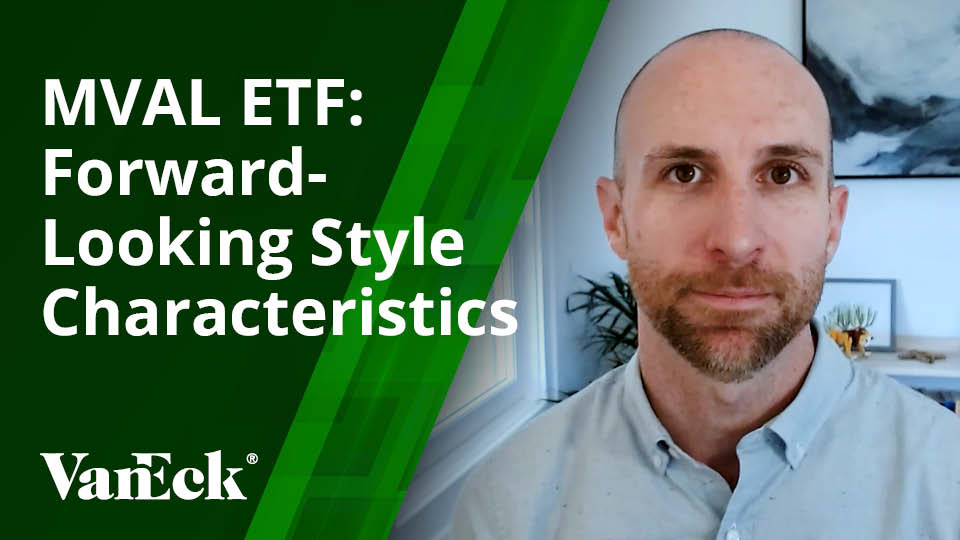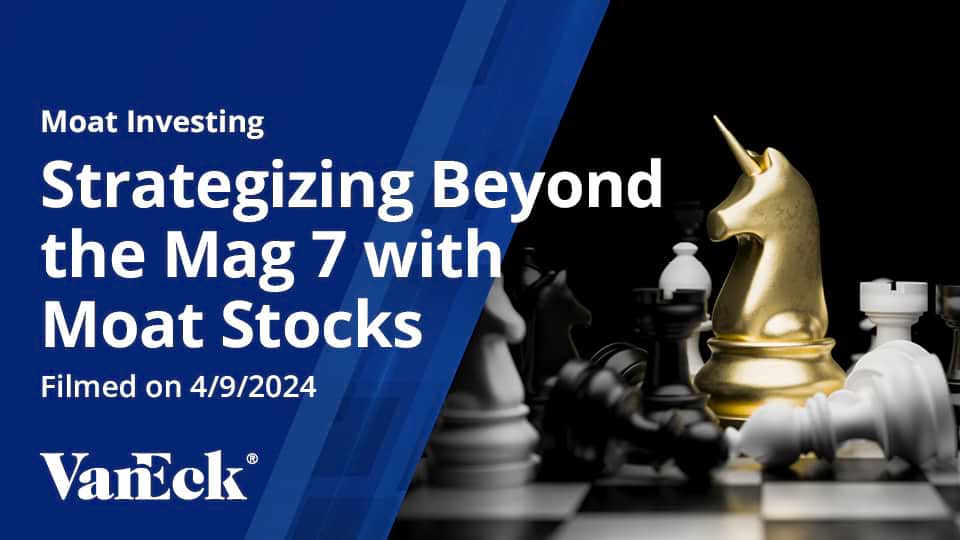Understanding Moat Index’s Valuation Conviction
December 10, 2021
Read Time 4 MIN
The systematic approach of the Morningstar® Wide Moat Focus IndexSM (the “Moat Index” or “Index”) to targeting valuation opportunities among the U.S. wide moat opportunity set has driven shifts in its style exposure at various times in the last several years. Notably, the Index developed a value bias in the months following the market turmoil in March 2020 as global economies began shutting down in response to the global pandemic. This served the Moat Index well in the final months of 2020 and into mid-2021.
Value has struggled in recent months, however. The Moat Index lagged the S&P 500 Index by more than 2% in November marking the first time since the Index’s live inception in February 2007 that it has lagged by more than 2% in two consecutive months. Its exposure in the Moat Index as well as underwhelming performance of several stock selections has driven the Index’s lackluster performance in October and November. The Index’s high conviction when it comes to targeting undervalued stocks means short-term underperformance driven by single stocks or groups of stocks are not uncommon.
Value Giving Up Early Gains to Growth
Year to date as of 11/30/2021
Source: Morningstar. Data as of 11/30/2021. Past performance is no guarantee of future results. Index performance is not illustrative of fund performance. For fund performance current to the most recent month-end, visit vaneck.com.
Tale of Two Allocation Effects in Moat Index
A traditional attribution analysis can help identify the drivers of relative performance. When assessing the Moat Index’s sector exposure, its overweight and underweight to various sectors had little impact on relative performance compared to stock selection within each sector, which drove the majority of underperformance throughout the last several months.
Moat Index Sector Attribution
Source: Morningstar. Data as of 11/30/2021. Index figures are gross of fees, holdings-based and do not factor in transactions, and therefore estimates only. Figures may not correspond with published performance information based on index values. Past performance is not indicative of future results. For illustrative purposes only. Portfolio holdings may change over time. Benchmark: S&P 500 Index.
However, when assessing the style exposure in the Moat Index, its overweight to large value and small value stocks along with its underweight to large growth and large blend companies did account for the vast majority of the relative returns in October and November.
Moat Index Style Attribution
Source: Morningstar. Data as of 11/30/2021. Index figures are gross of fees, holdings-based and do not factor in transactions, and therefore estimates only. Figures may not correspond with published performance information based on index values. Past performance is not indicative of future results. For illustrative purposes only. Portfolio holdings may change over time. Benchmark: S&P 500 Index.
Moat Index Allocation Not the Only Story
The Moat Index is a high conviction index targeting undervalued stocks, so periods of underperformance are not uncommon. Single companies or groups of companies can impact performance over short periods of time.
Compass Minerals (CMP) was one such company in November. The company’s new capital allocation plan included a nearly 80% cut to its dividend, and many income-oriented investors likely exited Compass positions as the yield on its stock dropped notably. It finished November trading at nearly 50% of its Morningstar-assessed fair value. However, Morningstar views Compass’ wide economic moat as stable and has maintained its fair value estimate of $85 per share.
Structural underweights to several notable S&P 500 companies also led to missed upside for the month. Wide-moat rated Nvidia Corp. (NVDA), which posted impressive returns in November, has traded at a steep premium to fair value for much of the last decade and has never managed to make its way into the Moat Index. Apple (AAPL) was a large contributor to market returns in November, but its narrow-moat rating renders it ineligible for the Index. Lastly, looking back to October, Tesla’s (TSLA) narrow moat rating would not have allowed the Moat Index to participate in the electric vehicle manufacturer’s impressive market movement – though Tesla also trades at a signification premium to Morningstar’s fair value estimate.
Moat Index’s Long-Term View
Many investors look to the Moat Index and its systematic strategy for core U.S. equity exposure. Despite unavoidable periods of underperformance, its batting average speaks for itself. The longer the time horizon, the better success the Index has had at outperforming the market.
Moat Index Batting Average Improves Over Time vs. S&P 500 Index
Monthly Frequency: 2/2007 – 9/2021
| 1 Month Rolling Periods | 6 Month Rolling Periods | 1 Year Rolling Periods | 3 Year Rolling Periods | 5 Year Rolling Periods | |
| Total Periods | 175 | 170 | 164 | 140 | 116 |
| Total Outperformed | 88 | 99 | 109 | 121 | 109 |
| Batting Average (%) | 50 | 58 | 66 | 86 | 94 |
Source: Morningstar. Data as of 11/30/2021. Past performance is no guarantee of future results. Index performance is not illustrative of fund performance. For fund performance current to the most recent month-end, visit vaneck.com. Batting average is measured by dividing the number of periods a portfolio or investment strategy outperforms a benchmark by the total number of periods.
In about two weeks’ time, the Index will also undergo its quarterly review at which point it will seek out valuation opportunities and its exposure may change. Stay posted for an update later this month.
VanEck Morningstar Wide ETF (MOAT) seeks to replicate as closely as possible, before fees and expenses the price and yield performance of the Morningstar Wide Moat Focus Index.
To receive more Moat Investing insights, sign up in our subscription center.
For further reading:
Related Topics
Related Insights
April 10, 2024
Important Disclosures
The information presented does not involve the rendering of personalized investment, financial, legal, or tax advice. Certain statements contained herein may constitute projections, forecasts and other forward looking statements, which do not reflect actual results, are valid as of the date of this communication and subject to change without notice. Information provided by third party sources are believed to be reliable and have not been independently verified for accuracy or completeness and cannot be guaranteed. The information herein represents the opinion of the author(s), but not necessarily those of VanEck.
This commentary is not intended as a recommendation to buy or to sell any of the sectors or securities mentioned herein. Holdings will vary for the MOAT ETF and its corresponding Index. For a complete list of holdings in the ETF, please click here: https://www.vaneck.com/etf/equity/moat/holdings.
An investor cannot invest directly in an index. Returns reflect past performance and do not guarantee future results. Results reflect the reinvestment of dividends and capital gains, if any. Certain indices may take into account withholding taxes. Index returns do not represent Fund returns. The Index does not charge management fees or brokerage expenses, nor does the Index lend securities, and no revenues from securities lending were added to the performance shown.
Allocation Effect is the portion of portfolio excess return attributed to taking different group bets from the benchmark. (If either the portfolio or the benchmark has no position in a given group, allocation effect is the lone effect.) A group’s allocation effect equals the weight of the portfolio’s group minus the weight of the benchmark’s group times the total return of the benchmark group minus the total return of the benchmark in aggregate. Selection Effect is the portion of portfolio excess return attributable to choosing different securities within groups from the benchmark. A group’s selection effect equals the weight of the benchmark’s group multiplied by the total return of the portfolio’s group minus the total return of the benchmark’s group. Active Return is the sum of all effects. The total effect represents the opportunity cost of your investment decisions in a group relative to the overall benchmark.
Fair value estimate: the Morningstar analyst's estimate of what a stock is worth.
Price/Fair Value: ratio of a stock's trading price to its fair value estimate.
The Morningstar® Wide Moat Focus IndexSM was created and is maintained by Morningstar, Inc. Morningstar, Inc. does not sponsor, endorse, issue, sell, or promote the VanEck Morningstar Wide Moat ETF and bears no liability with respect to that ETF or any security. Morningstar® is a registered trademark of Morningstar, Inc. Morningstar® Wide Moat Focus IndexSM is a service mark of Morningstar, Inc.
The Morningstar® Wide Moat Focus IndexSM consists of U.S. companies identified as having sustainable, competitive advantages and whose stocks are attractively priced, according to Morningstar.
The S&P 500® Index consists of 500 widely held common stocks covering industrial, utility, financial and transportation sector; as an Index, it is unmanaged and is not a security in which investments can be made.
Effective June 20, 2016, Morningstar implemented several changes to the Morningstar Wide Moat Focus Index construction rules. Among other changes, the index increased its constituent count from 20 stocks to at least 40 stocks and modified its rebalance and reconstitution methodology. These changes may result in more diversified exposure, lower turnover and longer holding periods for index constituents than under the rules in effect prior to this date.
The S&P 500® Index is a product of S&P Dow Jones Indices LLC and/or its affiliates and has been licensed for use by Van Eck Associates Corporation. Copyright © 2021 S&P Dow Jones Indices LLC, a division of S&P Global, Inc., and/or its affiliates. All rights reserved. Redistribution or reproduction in whole or in part are prohibited without written permission of S&P Dow Jones Indices LLC. For more information on any of S&P Dow Jones Indices LLC’s indices please visit www.spdji.com. S&P® is a registered trademark of S&P Global and Dow Jones® is a registered trademark of Dow Jones Trademark Holdings LLC. Neither S&P Dow Jones Indices LLC, Dow Jones Trademark Holdings LLC, their affiliates nor their third party licensors make any representation or warranty, express or implied, as to the ability of any index to accurately represent the asset class or market sector that it purports to represent and neither S&P Dow Jones Indices LLC, Dow Jones Trademark Holdings LLC, their affiliates nor their third party licensors shall have any liability for any errors, omissions, or interruptions of any index or the data included therein.
An investment in the VanEck Morningstar Wide Moat ETF (MOAT®) may be subject to risks which include, among others, investing in equity securities, consumer discretionary, consumer staples, financials, health care, industrials and information technology sectors, medium-capitalization companies, market, operational, index tracking, authorized participant concentration, no guarantee of active trading market, trading issues, passive management, fund shares trading, premium/discount risk and liquidity of fund shares, non-diversification and concentration risks, which may make these investments volatile in price or difficult to trade. Medium-capitalization companies may be subject to elevated risks.
Investing involves substantial risk and high volatility, including possible loss of principal. An investor should consider a Fund's investment objective, risks, charges and expenses carefully before investing. To obtain a prospectus and summary prospectus for VanEck Funds and VanEck ETFs, which contain this and other information, call 800.826.2333 or visit vaneck.com. Please read the prospectus and summary prospectus for VanEck Funds and VanEck ETFs carefully before investing.
Related Funds
Important Disclosures
The information presented does not involve the rendering of personalized investment, financial, legal, or tax advice. Certain statements contained herein may constitute projections, forecasts and other forward looking statements, which do not reflect actual results, are valid as of the date of this communication and subject to change without notice. Information provided by third party sources are believed to be reliable and have not been independently verified for accuracy or completeness and cannot be guaranteed. The information herein represents the opinion of the author(s), but not necessarily those of VanEck.
This commentary is not intended as a recommendation to buy or to sell any of the sectors or securities mentioned herein. Holdings will vary for the MOAT ETF and its corresponding Index. For a complete list of holdings in the ETF, please click here: https://www.vaneck.com/etf/equity/moat/holdings.
An investor cannot invest directly in an index. Returns reflect past performance and do not guarantee future results. Results reflect the reinvestment of dividends and capital gains, if any. Certain indices may take into account withholding taxes. Index returns do not represent Fund returns. The Index does not charge management fees or brokerage expenses, nor does the Index lend securities, and no revenues from securities lending were added to the performance shown.
Allocation Effect is the portion of portfolio excess return attributed to taking different group bets from the benchmark. (If either the portfolio or the benchmark has no position in a given group, allocation effect is the lone effect.) A group’s allocation effect equals the weight of the portfolio’s group minus the weight of the benchmark’s group times the total return of the benchmark group minus the total return of the benchmark in aggregate. Selection Effect is the portion of portfolio excess return attributable to choosing different securities within groups from the benchmark. A group’s selection effect equals the weight of the benchmark’s group multiplied by the total return of the portfolio’s group minus the total return of the benchmark’s group. Active Return is the sum of all effects. The total effect represents the opportunity cost of your investment decisions in a group relative to the overall benchmark.
Fair value estimate: the Morningstar analyst's estimate of what a stock is worth.
Price/Fair Value: ratio of a stock's trading price to its fair value estimate.
The Morningstar® Wide Moat Focus IndexSM was created and is maintained by Morningstar, Inc. Morningstar, Inc. does not sponsor, endorse, issue, sell, or promote the VanEck Morningstar Wide Moat ETF and bears no liability with respect to that ETF or any security. Morningstar® is a registered trademark of Morningstar, Inc. Morningstar® Wide Moat Focus IndexSM is a service mark of Morningstar, Inc.
The Morningstar® Wide Moat Focus IndexSM consists of U.S. companies identified as having sustainable, competitive advantages and whose stocks are attractively priced, according to Morningstar.
The S&P 500® Index consists of 500 widely held common stocks covering industrial, utility, financial and transportation sector; as an Index, it is unmanaged and is not a security in which investments can be made.
Effective June 20, 2016, Morningstar implemented several changes to the Morningstar Wide Moat Focus Index construction rules. Among other changes, the index increased its constituent count from 20 stocks to at least 40 stocks and modified its rebalance and reconstitution methodology. These changes may result in more diversified exposure, lower turnover and longer holding periods for index constituents than under the rules in effect prior to this date.
The S&P 500® Index is a product of S&P Dow Jones Indices LLC and/or its affiliates and has been licensed for use by Van Eck Associates Corporation. Copyright © 2021 S&P Dow Jones Indices LLC, a division of S&P Global, Inc., and/or its affiliates. All rights reserved. Redistribution or reproduction in whole or in part are prohibited without written permission of S&P Dow Jones Indices LLC. For more information on any of S&P Dow Jones Indices LLC’s indices please visit www.spdji.com. S&P® is a registered trademark of S&P Global and Dow Jones® is a registered trademark of Dow Jones Trademark Holdings LLC. Neither S&P Dow Jones Indices LLC, Dow Jones Trademark Holdings LLC, their affiliates nor their third party licensors make any representation or warranty, express or implied, as to the ability of any index to accurately represent the asset class or market sector that it purports to represent and neither S&P Dow Jones Indices LLC, Dow Jones Trademark Holdings LLC, their affiliates nor their third party licensors shall have any liability for any errors, omissions, or interruptions of any index or the data included therein.
An investment in the VanEck Morningstar Wide Moat ETF (MOAT®) may be subject to risks which include, among others, investing in equity securities, consumer discretionary, consumer staples, financials, health care, industrials and information technology sectors, medium-capitalization companies, market, operational, index tracking, authorized participant concentration, no guarantee of active trading market, trading issues, passive management, fund shares trading, premium/discount risk and liquidity of fund shares, non-diversification and concentration risks, which may make these investments volatile in price or difficult to trade. Medium-capitalization companies may be subject to elevated risks.
Investing involves substantial risk and high volatility, including possible loss of principal. An investor should consider a Fund's investment objective, risks, charges and expenses carefully before investing. To obtain a prospectus and summary prospectus for VanEck Funds and VanEck ETFs, which contain this and other information, call 800.826.2333 or visit vaneck.com. Please read the prospectus and summary prospectus for VanEck Funds and VanEck ETFs carefully before investing.


